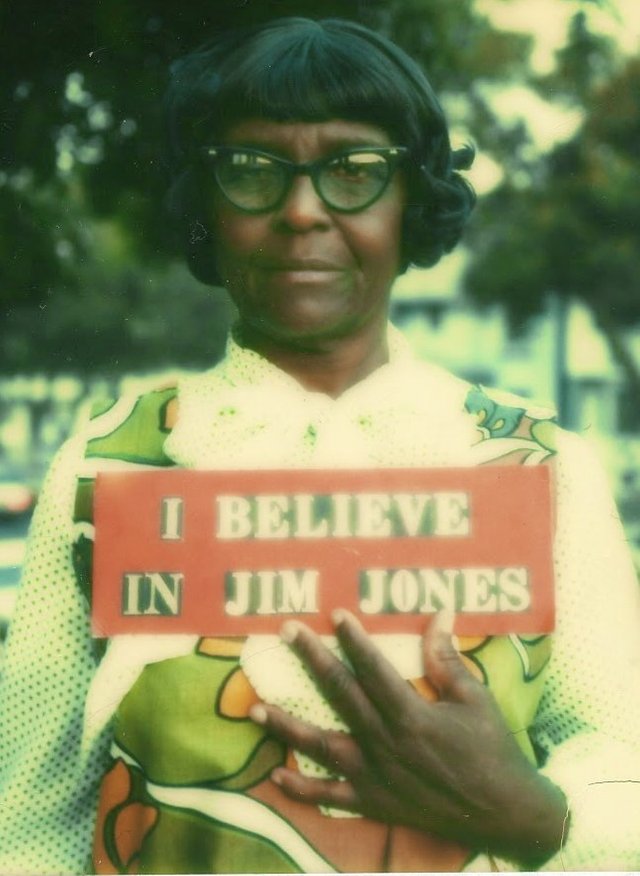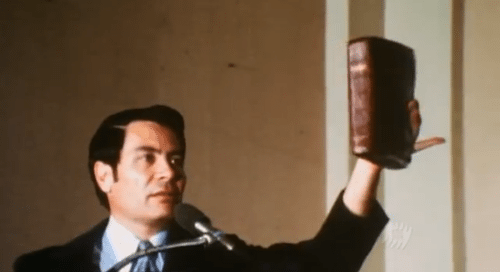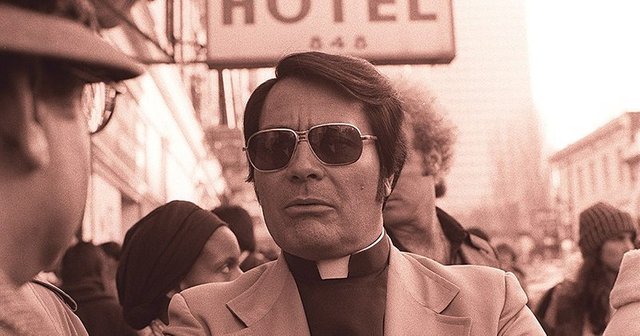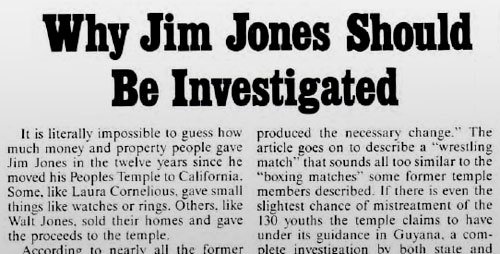Drinking the Kool-Aid: Part Two, Total Control
In the 1960s and 70s, Jim Jones built up a huge cult following. Forty years ago the terrible Jonestown Massacre occurred. How did Jones manage to wield such power and control over his followers?
This is Part Two of a short series of posts on the events leading up to The Jonestown Massacre on 18 November 1978. For more detail on Jim Jones and how he built the People Temple cult see Drinking the Kool-Aid: Part One, The Making of a Cult.

image
Taking control
Jim Jones had gained an enormous amount of power. He was feted by politicians and celebrities. And the more power he got, the more he coveted it.
Jones had a huge issue with control. He needed to control the life of every Peoples Temple member. He practised this control in a ruthless and often bizarre way.
Congregants had to turn over their houses and bank accounts to him. He would make them sign blank pieces of paper on which anything could be written. Later on, people had to sign pre-written confessions such as parents confessing to molesting their children. People confessed to being rapists, paedophiles or thieves. These confessions were to be used as blackmail in case of desertion or disloyalty.
Jones told his members that if they thought he was God, then to call him God. Or call him Father if they thought of him as their father. Everyone called him Father. He demanded he be their everything: father, mother, sister, brother. So he started pitting wives and husbands against each other. He alienated family units and split them up to owe total allegiance to him.

Abuse
He wanted total mind control over all his followers. He used all the mind control tools to do it: isolation, sexual abuse, physical abuse, breaking people down.
He openly talked about his sexual proclivities. He would say he would have sex with both men and women, young and old—for the cause. He claimed to not enjoy it but was forced to do it to build a socialist utopia. And he was doing it for his victim, not himself.
He had sex with hundreds of his followers, mostly women but men too. The Temple owned a fleet of buses to move his members around California. He always travelled in the 7th bus, where he had his private quarters. This is where he regularly had sex with people who had caught his eye.
He became a heavy drug user, taking uppers and downers every day and getting addicted to them. He was addicted to drugs, sex and power.
He also exercised his physical control over his members with a great deal of cruelty. He was very quick to punish people for minor or even imagined infractions. Sometimes this punishment would be something like writing lines, but usually, it involved beating and humiliation. He would often rail against a congregant during a sermon, accusing him or her of lying, dishonesty or worse, disloyalty. The victim would be called up amidst catcalls and jibes from the other congregants and would then be slapped and beaten while being held down. Jones would give a high-pitched giggle while this happened.

Practising suicide
Jones began introducing the idea of suicide to his members. One day the inner circle was given some wine to drink—for most the first alcoholic drink that had had in years. After finishing it Jones told them that they had been poisoned and had an hour to live. He waited a while to tell them it was only a joke, but they had demonstrated their loyalty. Suicide became a common theme in his sermons. He floated the idea of dying for communism and socialism.
His apocalyptic sermons became ever more fearful. He warned of a coming dictatorship and how he and his family would rather die than submit to it. He conjured up fear. He then started giving his terrified congregants some hope by promising them they would move to a new place—a new country, where they could live in peace in a socialist paradise.

Bad press
Jim Jones tried to achieve total and absolute control over his flock. By 1976 a few defections had started. A married couple, Bob Houston and Joyce Shaw lived in a Temple commune, although they owned a house. Bob had at least twice been badly pummeled as punishment for questioning socialist theory. Joyce had been overworked and suffered from severe stress. She slipped away while on a cross-country bus ride and went into hiding. She was recorded speaking to Bob on the telephone urging him to leave and rekindle their relationship. The next day Bob was found dead in a railroad yard. When Joyce went to collect Bob's possessions, she was warned that she should not try to gain custody over Bob's two children because Bob had signed a confession of molesting them.
Bob's father Sammy, a well-known press photographer, told this story to several reporters. Sammy Houston also communicated his story to his friend, Congressman Leo Ryan.
Further stories surfaced. The allegations of physical, emotional, and sexual abuse, blackmail, and other crimes were corroborated. State and federal agencies started investigations into the People Temple, and defectors started forming support groups.
In April 1976, San Francisco Chronicle reporter Julie Smith neared completion of an unfavourable story on the Temple. Jones managed to prevent its publication by applying huge pressure on the newspaper and harassment of Smith.
In late 1976, Chronicle reporter Marshall Kilduff wanted to do a story on the Temple. He wondered how Jones had somehow learned the exact contents of Smith's article before it had come out. The answer came when he toured the Temple and saw Chronicle city editor Steve Gavin and reporter Katy Butler in attendance. So he took his story to New West Magazine. The magazine was blitzed by an avalanche of smears in phone calls and letters before it was published.
With all this heat from the defectors and the impending publication of the article, Jones decided he wanted to begin moving the Temple to Jonestown, its agricultural project site in Guyana. Jones spent four days planning the exodus with his top aides. Jones fled to Guyana the night the article was published. By July 1977, about 600 passports were issued to Temple members.
This series on the Jonestown Massacre will be continued in Part Three, tomorrow
Previous posts in this series:
Drinking the Kool-Aid: Introduction
Drinking the Kool-Aid: Part One, The Making of a Cult
References:
https://jonestown.sdsu.edu/?page_id=47
https://www.vice.com/en_ca/article/ezw344/how-jim-jones-went-from-civil-rights-leader-to-cult-murderer
https://en.wikipedia.org/wiki/Jim_Jones
https://en.wikipedia.org/wiki/Peoples_Temple
Also posted on Weku, @tim-beck, 2018-11-21
He was very similar to a dictator.
True, @postparody. He modelled Jonestown on North Korea
Chilling. And certainly give pause for thought about how charismatic, often wounded people gather people around them.
Absolutely. Needy people living on the margins of society heard a message of equality and inclusiveness. What they got was a nightmare they couldn't wake up from.
You do know that the Apostolic Faith Mission started in South Africa on the back of the "poor white problem" which emerged from after the Rinderpest when folk lost their livestock and therefore livelihoods? Had the potential to have ended up as a cult. There are folk that suggest that, in its early days, Rhema was heading in the same direction. It was also the foundation for job reservation.....
No, I didn't - that's very interesting. I was reading about some of these communities a while back - mainly public works-type setups for poor Afrikaners. They were hectic places. I guess good hunting grounds for such groups.